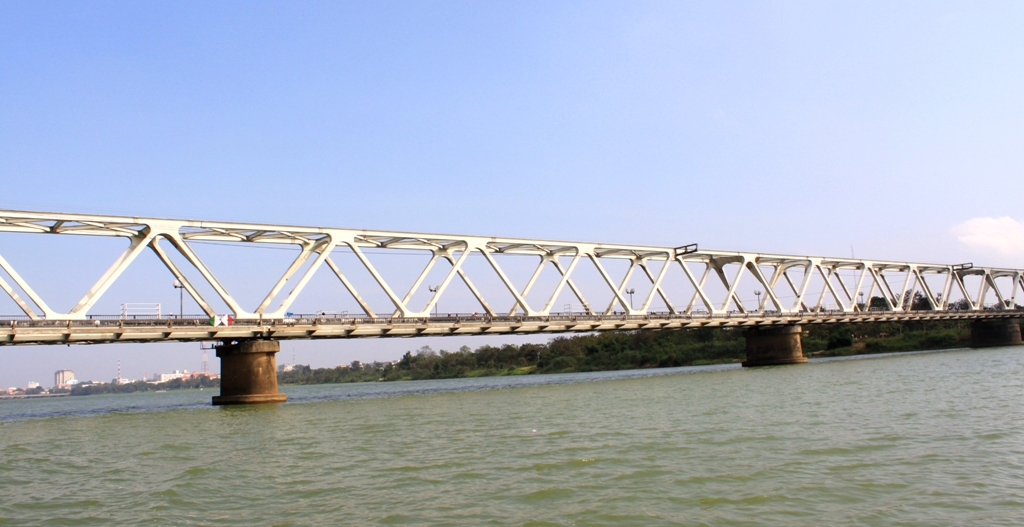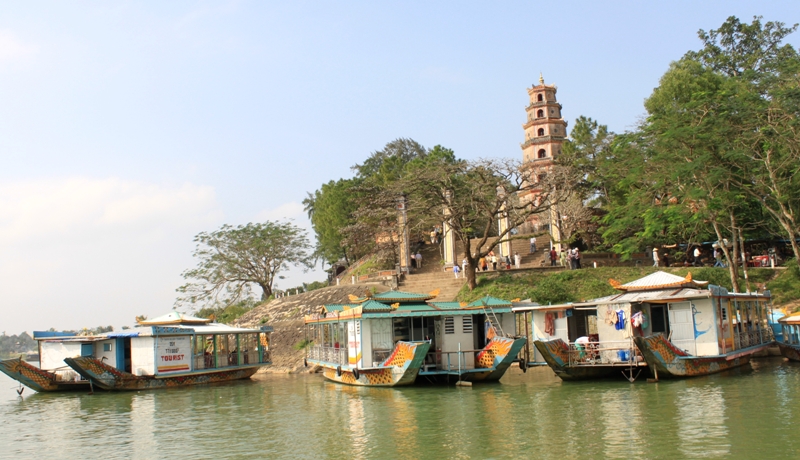Perfume River is a beautiful river, if not the most pristine river in Vietnam. It comes with several different names: Lô Dung, Linh, Dinh, Kim Trà and Huong, the most common name rendering its English translation as “Perfume River”. Only 60 miles long but the river is packed with natural beauty and cultural significance. It also serves as a big defense moat for Hue Citadel. Together with Truong Tien Bridge, Perfume River is considered the symbol of Hue that has inspired painters and authors for generations.

Perfume River has a total length of 100km, 30km of which runs through Hue Imperial City. The river starts from Truong Son mountain range with two tributaries: the Ta Trach (right tributary) and Huu Trach (left tributary). Both flow through lush forests, valleys and grassland before joining together at Bang Lang junction to form Perfume River. This is also a source of explanation for the river’s beautiful name. The water carries aroma of tropical trees, flowers and grasses into the downstream crossing Hue city. Little is known about the exact flora of this legend while others assumed that the river was simply named after the Huong Tra district it flows through.
Beside aromatic water, another special feature of Perfume River is that it changes colors several times in a day. The morning light green water quickly turns into blue in the sunshine, then golden and purple in sunset. If you have a chance to contemplate Hue in a moonlit night, you will see a stunning silvery “Perfume River”. The river is best visited in Feb-March, when pomelo trees are in full bloom and aromatic blossoms bring out emotions of spring.
Known for its peaceful and poetic beauty, Perfume River embodies the soul of a historic city. The river defines the magnificent landscape of Hue, proudly crowned the last imperial city of Vietnam. To the upper reach, there are picturesque vistas of Ngu Binh Mountain and Truong Son range, which give way to verdant countryside, rice fields and fruit gardens in the downstream. The river forms pristine villages of Kim Long, Thuy Bieu, Dong Ba and Vi Da before meandering through the heart of Hue marked by iconic Truong Tien Bridge. Crossing Hue city, it creates quaint fishing villages and port towns of Sinh, Bao Vinh and Thanh Ha. Though not much old charm remains today, some beautiful architectural vestiges still exist.

Perfume River provides a cultural lifeline for all the lands it touches. It is closely attached to local life with many interesting traditions. Most popular traditional practices are lantern floating, sampan racing, performing folk music performance on boats and sleeping overnight on the river under a starry or moonlit sky. These activities were enjoyed by not only ordinary people but also royal and mandarin ranks.
Perfume River offers a striking opportunity to dig deeper into Hue pristine nature and culture that sprout along its two banks. It is also a joy to explore by the riverside but experiencing Hue from the waterway is unlike any other. And with all constant changes and development going on, you’d better visit now before it will be all changed.